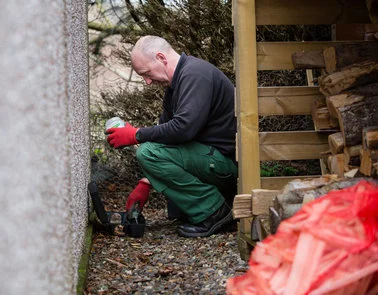Pest Infestation Issues: How to get rid of rats in your home
/Get rid of your rat infestation, a step by step guide
Rats, they make your skin crawl even thinking about them.
So, when you’ve been kidding yourself on that you have a mouse problem and suddenly find out that it’s a rat infestation, panic can often set in!
I tend to find that people react in one of two ways; one tears their property apart hunting down the rodents in attempt to get rid of them and the second type ignores the issue completely and hopes it goes away on its own.
Your rat infestation will not just disappear though, in fact it’s only going to get worse and at a rapid speed. Rats reach sexual maturity within a month after birth, and females can have litter of eight to twelve; upto fifteen times a year!!
Therefore the longer you leave it, the bigger the problem and the more costly it will be. Not only from your attempts to get rid of them, but also from the damage caused by them.
So let’s cut to the chase and explain how you can get rid of your rat problem
7 steps to getting rid of your rat infestation.
Confirm your pest issue.
When you start to hear noises in your walls, notice gnaw marks on rubbish bags, or footprints in the dusty basement its hard to tell whether you have a mouse or rat problem.
The easiest way to identify your issue is to look at their droppings; mice will leave lots of small brown droppings, smaller in size than a rice grain. Rat droppings are larger in size and circumference and will mostly have a rounded end rather than a tapered end.
Here is a link to our article on how to detect a mice infestation.Inspect the property.
It’s important to identify where the root of your rodent problem is. How are they gaining access to your property? Rats only need a ½ inch gap to squeeze through, this could easily be a gap in your wall around a pipe, the space between your door threshold or a lose tileMake your property less attractive to rodents.
Take the long term view and prevent rodents gaining access to your property by taping up cracks in walls, sealing holes around plumbing and covering ventilation and drainage pipes.
Consider where they may have been sheltering or nesting, rats are very cautious animals and so will be using them to hide under. Clear up, move items away from your property or get rid of these areas all together; Compost heaps, garden debris, accessible rubbish, Cardboard boxes full of unused clutter these are all ideal rodent habitats & nesting materials. Rats unlike mice also need regular access to water, so if where possible cover up open supplies .Decide on a treatment of trapping or rodenticides.
Trapping is best used when trying to get rid of an internal issue as rodenticides could mean you end up with dead rats leaving a stench within wall crevasses or under floorboards. We would always recommend snap traps as they provide an instant kill, which is the most humane method to the animal. You may have heard of glue traps however these cause the rodents more distress and certainly do not live up to their ‘humane’ marketing – Read our blog on humane traps
Rodenticides are a type of poison, as a professional pest controller we use Anti-coalgulents which work by disrupting the rats ability to clot their blood. In 2016 a legislation was brought in to regulate the use of this poison to help protect children and non-target species. (link to article) Rats are neophobic, meaning they are scared of new things so it is likely when using poison it is going to take a few days for it to take action. The rodenticides, either in a block or paste form (pellets are only available to professionals) should be positioned within tamper-proof bait boxes to protect humans and other animals.Position traps or poisoned bait boxes
Place them at suspected entry points, behind appliances & high risk areas such as rubbish areas or loft space.Check for signs of rat disposal regularly.
Checking the bait boxes to see that poison has been taken and removing the dead bodies from the snap traps.Leave control measures in place.
Often people remove the traps once they believe their problem has gone however due to the speed at which rodents breed, it is far more effective to keep them in place.
Still having no luck?
Products designed for the consumer market are limited by their strength & quantity; however the main difference in using a professional pest controller is their experience. Having spent over 15 years in pest control I am seeing rat & mice issues on an almost daily basis. People are often gobsmacked, and slightly embarrassed when I tell them of their issue, however it is an extremely common problem both in the country and town. If you would like to speak to me about your pest control issue use the contact form.



